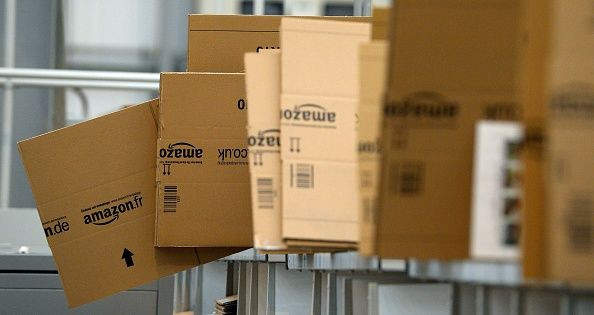Amazon Should Use Prime Day To Promote Amazon Key

Scheduled for July 15 and 16, Prime Day 2019 is fast approaching. It should be Amazon.com's (NASDAQ:AMZN) most lucrative shopping extravaganza yet, particularly as it stretches the festival of consumerism out to two full days this year.
Surveys suggest that more than three-quarters of all Prime members plan to buy something from the online retailer this year, up from 63% a year ago. But one area that will likely be missing from this sales boom is Amazon's grocery department, particularly the produce aisle as consumers continue to have concerns about getting their groceries delivered fresh.
And with fresh produce driving 49% of all dollar sales growth at brick-and-mortar grocery stores, Prime Day would be a prime opportunity for Amazon to heavily promote its in-home delivery service, Amazon Key.
Falling behind
It is losing ground to Walmart (NYSE:WMT) in the grocery wars. While Amazon is still the leader, with Coresight Research saying almost 63% of online grocery shoppers bought from the e-commerce giant over the last year, Walmart is quickly winning over new converts with 37% of consumers buying from its site, up from 25% (Target was third with almost 16% of consumers buying from it). Since these figures obviously total more than 100%, it means online shoppers are buying from more than just one site, but Amazon seems to be their go-to site most.
Yet what's more important, grocery shoppers spent more at Walmart than they did at Amazon. A Bricks Meet Clicks survey found customers spent just $45 per order at Amazon, but $116 online at supermarkets like Walmart.
And now Walmart is introducing its InHome Delivery program into three cities, Kansas City, Missouri; Pittsburgh; and Vero Beach, Florida. Employees will deliver and put perishable items away for customers right into their refrigerators. Without a coordinated response from Amazon, Walmart will continue eroding its lead, which is why a Prime Day offensive would be smart.
Data from Phononic, a solid-state semiconductor manufacturer for the cooling and refrigeration industry, indicates only 37% of consumers are confident or very confident that a retailer can keep food at the right temperature during delivery. And it shows that over 40% of consumers who have shopped for food online have experienced problems with perishable items arriving safely, or are worried that something might happen to them en route.
Kroger (NYSE:KR) has tried to allay worries by allowing customers to pick up their grocery order from a Walgreens. Although that service is still a little odd, it is another way to overcome the reluctance of consumers to shop for their groceries online. It's why Phononic found only 22% of Prime consumers plan to shop for groceries on Prime Day.
Amazon holds the Key
To add another layer of meaning to its name, Amazon Key could be a key point of differentiation that tilts the field in its favor because the e-commerce giant remains among the most-trusted companies. Harris Poll surveys have annually ranked Amazon either No. 1 or No. 2 in trustworthiness, whereas Walmart is closer to the bottom (it was 79th this year). When it comes to letting people into your home, trust is going to be essential.
The service would also be a more worthwhile use of Amazon's resources than, say, drone delivery. Although Phononic found over 60% of consumers would have a parcel delivered by drone, that support plunges to just 26% when it comes to fresh produce or meat.
Groceries have never figured large in Prime Day, as consumers mostly go for gadgets and gear, but last year it extended savings to members who shopped at Whole Foods. While Amazon noted that those customers saved millions of dollars, it leaves millions more in potential revenue on the table that could be realized from online grocery sales.
To the victor belong the spoils (and not the spoilage)
It also highlights the importance of getting fresh-food delivery right. There is a large revenue and profit potential for the retailer that can get groceries to the consumer with minimal concern about spoilage.
Walmart is improving its hand at convincing customers it can deliver groceries fresh. If Amazon.com used Prime Day to highlight its grocery solutions as well as its gadgets -- and taking into account the concerns consumers still have across the entire range of food and beverage delivery -- it could easily win the online supermarket sweepstakes.
This is Amazon's fourth annual Prime Day, and it's poised to be the biggest ever. It would be a mistake to ignore the grocery section once again.
This article originally appeared in the Motley Fool.
Rich Duprey has no position in any of the stocks mentioned. The Motley Fool owns shares of and recommends Amazon. The Motley Fool has a disclosure policy.




















